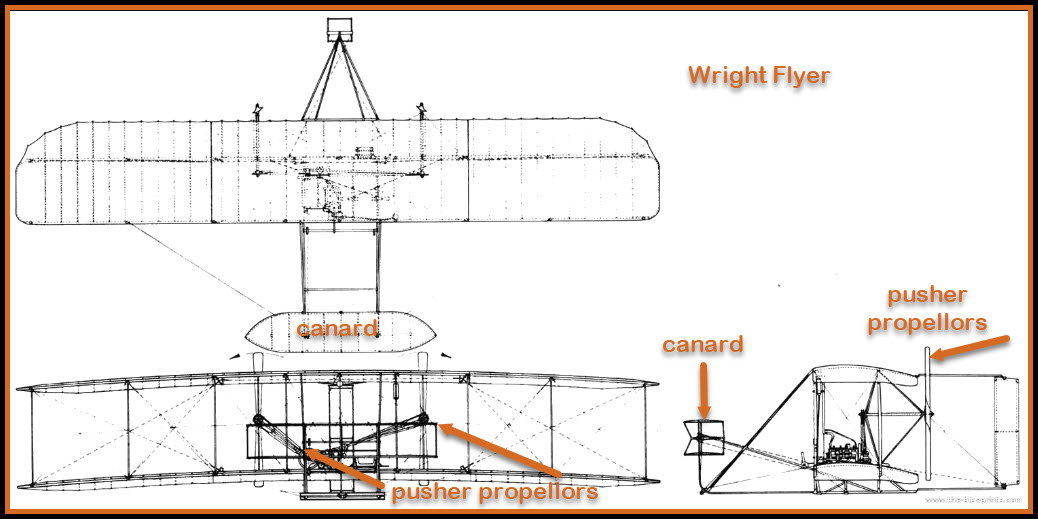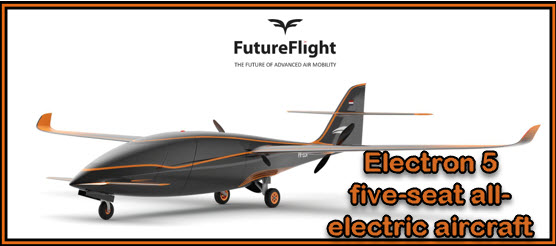ELECTRON’s exciting GREEN advantages- will Capital be attracted?

Business aviation has been reviled, unfairly, for its green record. Comes now a British, now Dutch start-up that wants to provide this segment of vital air commerce with a five seat, all electric, 310 mile aircraft by 2028—THE ELECTRON MODEL 5.
History compels that it be noted that this innovative aircraft’s design borrows from the 1st aircraft-

These two elements contributed to the control and efficiency at Kitty Hawk and were selected again for these attributes.
The co-founder and former 15 year FlyBe pilot, Josef Mouris, found a gap in the developing marketplace for electric vehicles. The eVTOL initial designs will not meet the range needed for these potential customers. Electric fixed-wing proposals were either too small or too big.
Innovation needed is not yet complete and ELECTRON lists propulsion systems, batteries and avionics as areas requiring further development research. The company located its headquarters at Rotterdam, only 132 miles (212 km) to EASA’s Brussels Office. Coordination with the certification office will facilitate the process.
ELECTRON’s biggest need is €s. Though they have orders amounting to €230 million (ABOUT $250 MILLION), capital in abundance will be required for research, testing, prototypes, manufacturing set-ups (machines and facilities) and production.

Mouris explained that the investors and lenders are focused on the sexy eVTOL opportunities. A fixed wing with his the Model 5’s operating parameters and environmental superiority SHOULD, he believes, be drawn to the ELECTRON plane. By converting ground passengers to electric air, GREEN CAPITAL will see its environmental benefits and future passenger demand.

Exciting prospects, environmental benefits and technical challenges will determine the fate of the Electron 5 model.

++++++++++++++++++++++++++
ELECTRON AEROSPACE SHOWS NEW DESIGN FOR ELECTRIC FIVE-SEAT UTILITY AIRCRAFT
- CHARLES ALCOCK
- MARCH 27, 2024

ELECTRON AEROSPACE is stepping up work to bring a five-seat all-electric aircraft to market by the end of this decade. The Dutch start-up unveiled an updated design for the Electron 5 model, for which it intends to start deliveries in 2028.
As battery technology continues to improve incrementally, the company believes the Electron 5 model will have an OPERATIONAL RANGE OF 500 KILOMETERS (310 MILES), including anticipated safety reserves for energy equal to an additional 250 km. According to co-founder and CEO Josef Mouris, for the regional air mobility market, the company initially intends to address city-pair sectors of around 370 km and at A SPEED OF 350 KM/H.

When it was launched in 2021, Electron’s initial business plan was to lease and operate electric aircraft. “But we soon found there wasn’t anything suitable out there,” Mouris told AIN. “The [two-seat] Pipistrel [Electro] is too small and the [nine-seat] Eviation Alice still had uncertifiable engines on the wing tip back then and is simply too big for the market we want to address. We didn’t want eVTOL aircraft because we don’t think these fit existing certification and operating standards and will not have the required range nor the low operations costs of a pure electric eCTOL. What we needed was something like an electrified Diamond DA62, but unfortunately retrofitting does not work.”
Having resolved to develop its own aircraft, Electron decided to offer this to other operators initially to establish where it might fit in the market. It has previously signed memorandums of understanding with South Korea’s Mint Air and Australian aircraft distributor FlyOnE. Along with an agreement with Danish-German logistics group Danx Carousel, it said the value of pre-orders now totals more than €230 million (ABOUT $250 MILLION).
The Electron 5 design features a long wingspan, a canard, and a T-tail. With its twin pusher propellers, the aircraft is (in appearance) somewhat reminiscent of Piaggio’s Avanti turboprop. Operating with a single pilot, it would seat up to four passengers or carry 500 kilograms (1,100 pounds) of freight on a standard European pallet and be able to operate from short landing strips of less than 800 meters (2,600 feet).
The company presented the new design to investors in late January, before making it public this week. “Taking inspiration from the albatross, our Electron 5 features an aerodynamically efficient body, robust wings, and windows that mimic the bird’s vigilant eyes,” explained Electron’s head of design, Alexander Klatt. For freight operators, the aircraft can include a cargo door in the side of the fuselage.
So far, Electron has built a pair of cabin mockups to validate use cases with customers that could include cargo and emergency medical support, as well as passenger flights in single-pilot operations. It is working with Dassault Systèmes’ design and engineering software with plans to forge further agreements with partners to supply key technology such as the propulsion system, batteries, avionics, and other components.
MORE FUNDING NEEDED TO GET TO MARKET
Having raised an undisclosed seven-figure amount for the program, Electron is now seeking additional financial backers. Mouris acknowledged the current environment for finding investors in electric aviation is proving challenging, with MORE MONEY having gone previously to EVTOL START-UPS THAN TO NEW FIXED-WING MODELS looking to unlock transportation options from numerous under-utilized small airports.
“Our main goal is to convert ground trips involving four- to eight-hour drives [into sub-regional flights],” Mouris explained, pointing to sector examples, such as Dutch towns Groningen, Twente, and Maastricht to larger cities like Copenhagen, Paris, and Berlin. This approach would also avoid travelers having to make inefficient trips to larger hub airports like Amsterdam Schiphol.

Electron Aerospace says its four-passenger all-electric aircraft could open up more convenient regional air services at smaller airports. (Image: Electron Aerospace)
Mouris, a former airline pilot with FlyBe, founded Electron with Marc-Henry de Jong, a management consultant with extensive experience in sustainability businesses. Electron’s engineering team has previously held senior roles with companies including Fokker, Airbus, GKN Aerospace, Embraer, Lockheed Martin, and General Atomics.
Initially, the business began in the UK but in the wake of the country’s Brexit departure from the European Union (EU), Electron is now incorporated in the Dutch city of Rotterdam so that it can work directly under EASA’s jurisdiction. Mouris told AIN that government funding opportunities in the EU are better suited to product development than in the UK.
The company aims to complete EASA type certification by the END OF 2027. It is preparing to file an application for a design organization approval from the European air safety regulator but has not yet indicated when it intends to build and fly a full-scale prototype.

+++++++++++++++++++++++++